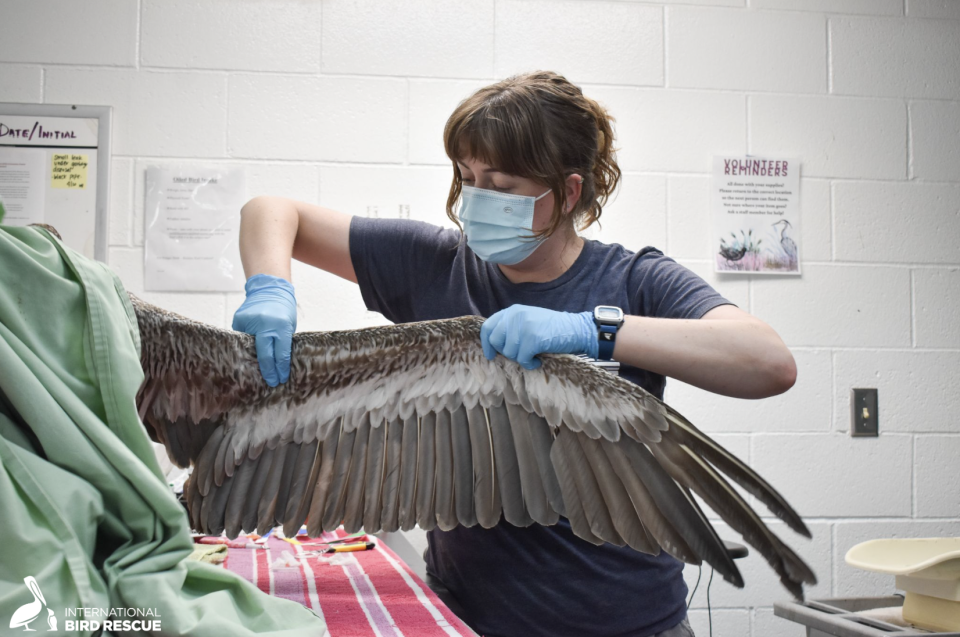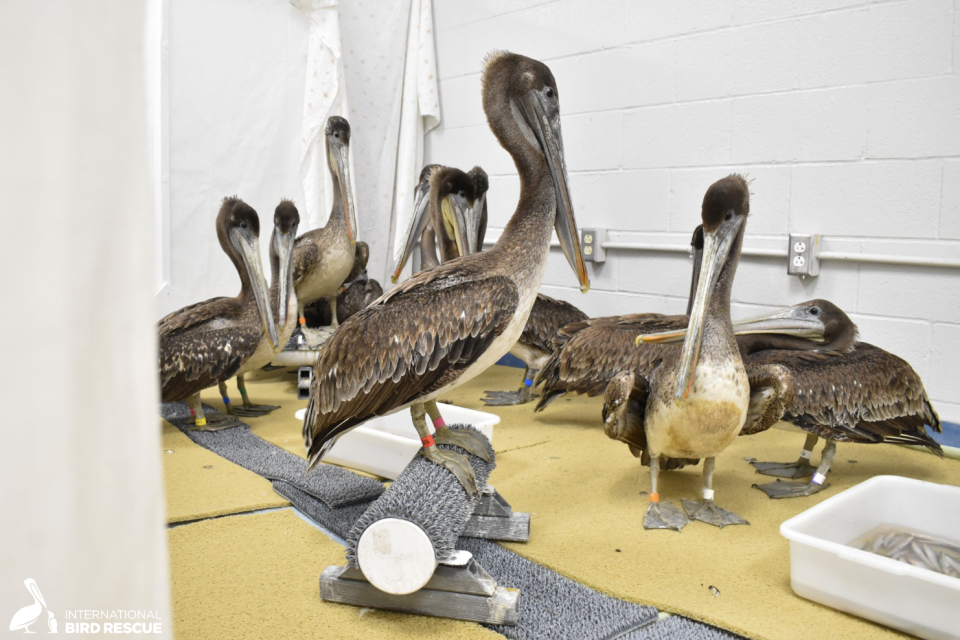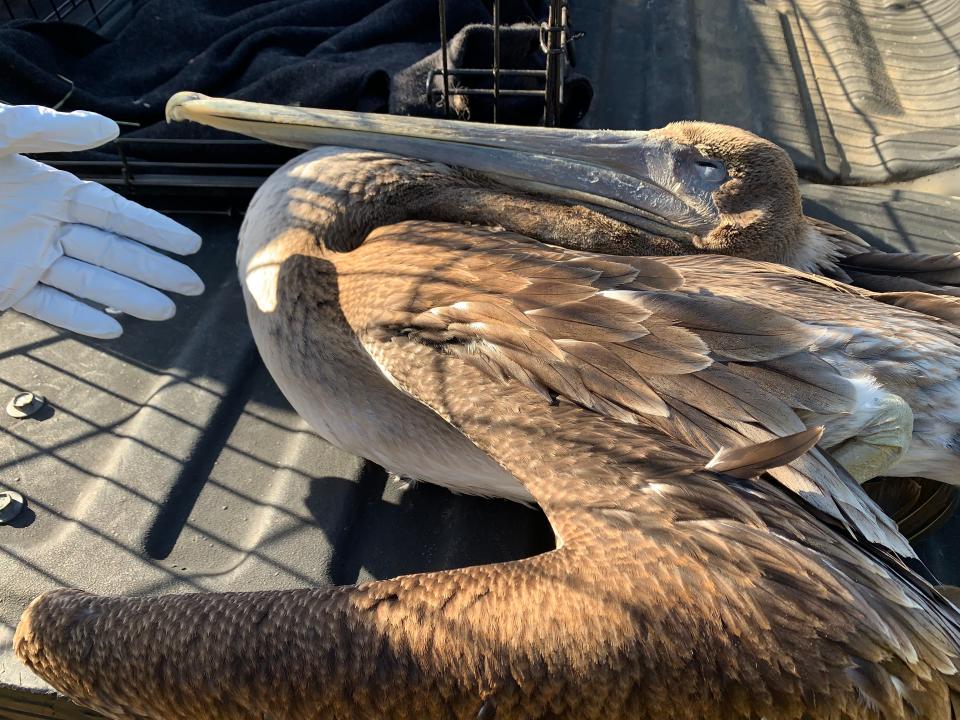Growing number of starving brown pelicans are turning up across Southern California coast
More than 500 brown pelicans have been found starving or dead over the past two weeks on the Southern California coast for reasons yet to be determined, wildlife officials said.
A mix of juvenile and adult pelicans have turned up sick, injured and too weak to fly, flooding wildlife rescue centers with calls.
Some of the first signs of a problem occurred in Ventura and Santa Barbara counties. Nearly 230 brown pelicans were found in just 10 days, according to the Santa Barbara Wildlife Care Network, which rescues and rehabilitates seabirds found in the two counties.

“They definitely were kind of the epicenter for all of this in the beginning,” said Heather Perry, wildlife rehabilitation program coordinator for the state Department of Fish and Wildlife.
Related: Sick and injured brown pelicans inundate rescue groups in Southern California
Over 100 pelicans remained at the Santa Barbara center Monday. Other pelicans had been transferred to the large International Bird Rescue hospital in Los Angeles County.
The San Pedro center had 204 of the seabirds this week, including 80 that had recovered enough to go into an outdoor aviary.
Some are not quite strong enough yet, said Rebecca Duerr, the hospital's director of research and veterinary science.
Along with anemia and dehydration, a couple of pelicans had been hit by vehicles and several had fish hook injuries, signs likely related to riskier attempts to find food, she said.
The number of new patients seemed to be slowing this week, but Duerr said another wave could happen. This year’s babies are likely still in nests, including on the Channel Islands, which host the largest breeding colonies of the seabirds in the western U.S.
“When that flood of fledglings comes, we don’t know what’s going to happen,” she said.
As of Wednesday, rehabilitation centers from San Diego to Monterey reported more than 330 pelican patients and an additional 200 that had died, Perry said.

Dig deeper: Brown pelicans showed up with slash wounds. Now, rescuers are asking for help to find out why
Necropsies performed on several of the birds have shown signs of starvation. None had tested positive for a highly pathogenic bird flu found elsewhere, she said.
It’s unclear why so many of the birds have ended up starving. The pelicans’ primary food sources of sardines, mackerel and anchovies appear to be doing well.
Other factors such as heavy winds could be affecting the bird's ability to dive for fish. But at this point, Perry said, “we have no hard evidence of one thing or another driving this environmentally."
The agency is collecting data on the sick and dead pelicans and helping rehab centers get enough fish for the birds, she said.
“Pelicans really have a metabolism like a growing teenager when they are putting muscle back on after being emaciated nearly to death,” Duerr said.

One pelican can eat five pounds of fish a daily, she said.
Once at risk of extinction, the California brown pelican was removed from the federal endangered species list in 2009.
Starting in the 1960s, the pesticide DDT took a steep toll on the pelicans, along with bald eagles and other birds. The contamination led to eggshells becoming so thin that they would break in the nests.
While DDT was banned in the 1970s, its effects off the Southern California coast lasted for decades.
Inching back from the brink: Ojai woman helps save endangered plants on Channel Islands
To help
If you find a pelican in distress, call a local wildlife rescue center. Until a trained rescuer shows up, avoid disturbing the bird. Don’t try to feed it or pick it up.
To report a bird in distress along Ventura and Santa Barbara beaches, call the Santa Barbara Wildlife Care Network at 805-681-1080. More information: sbwcn.org.
Wildlife centers accept donations and volunteers.
Report dead pelicans using the state's mortality reporting system, include photos if possible.
Cheri Carlson covers the environment for the Ventura County Star. Reach her at cheri.carlson@vcstar.com or 805-437-0260.
This article originally appeared on Ventura County Star: Starving pelicans continue to fill Southern California wildlife hospitals

